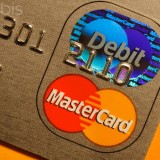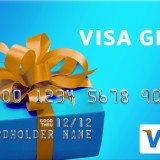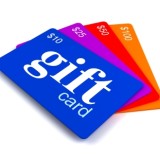Debit card rewards have come and gone over the past few years. With credit cards, rewards and promotions are much more prevalent, but after the financial collapse in 2008, many banks got rid of most of their debit card promotions. But now banks are starting to bring the rewards back to attract new business as the financial markets improve.
Check Out These 5 Debit Card Rewards Programs
- Ally Perks: Ally is an online only bank that offers services such as checking and savings accounts, CDs and IRAs. Customers who have checking accounts with linked debit cards are eligible for Ally Perks. With this program, you make qualifying purchases using the debit card, and the bank will automatically put money back into your account. These cash-back rewards can be substantial and add up over time. If you spend $100 on a qualifying purchase, Ally will deposit up to $10 back into your account, depending on the category of the purchase and the promotion at that time.
- PerkStreet Financial Debit MasterCard: This program features a MasterCard debit card that offers up to 2% cash back on everyday purchases. The rewards are pretty simple. You get 1% back at merchants all over just for using the card and 2% from online purchases at selected merchants including Amazon, Apple and Best Buy.It also offers a rewards program called Power Perks. For every 22 Power Perks you redeem, you receive $20 cash back. Cash can be redeemed in increments of $20. You can also redeem your perks for gift cards to retailers and restaurants including Amazon, Wal-Mart, Target, Applebee’s and many more. Each perk is worth $1 in gift card value. Card values may vary by merchant.
So, to point out a little of the fine print: be aware of the following important notes about the program.
- Online purchase bonus perks are limited to $2,500 in spend every calendar year.
- You can earn 2% cash back in-store, when you have a Current Account Balance of $5,000 or more at: Walmart, Target®, Best Buy® & Apple® stores.
- Offline purchase bonus perks are also limited to $2,500 in spend every calendar year.
- BankAmeriDeals: This is a recently launched program from Bank of America. You can log into your checking account online and see a tab that lists the currently participating local and national retailers. The retailers change every few weeks, so it pays to check back regularly. Each retailer has its own reward structure, typically paying back a percentage of total sales. The rewards are then credited as cash right back to the customer’s account. The system is simple and easy to use. Prior to shopping at the merchant, remember to log on to your online account and “activate” the deal to your account by clicking the activate button. hen just pay with your debit card at the merchant to receive your reward. Please note that you must “activate” the deal online before you shop at the merchant to earn the rewards for your purchases.
- Logix: Generous debit card reward options exist at Logix. You can earn 1 point for every $1 using your Logix Debit Card. In addition, you earn 1 point for every $2 by purchasing by signing your name (rather than entering your PIN) with your enrolled Logix Debit Card. The rewards bank has gift cards and merchandise you order, using your points. The online rewards store offers merchandise including cameras, TVs and jewelry, as well as travel reservations and gift cards. The debit rewards card is free with one of their checking accounts. Checking accounts range from free accounts for teens to accounts with a monthly fee of $2.95 to $9.95. These fees are fairly easily waived for items such as $100 per month direct deposit or hitting certain thresholds in balance on other interest bearing checking accounts.
- Bank of America Keep the Change: One of the oldest programs, this is a very different kind of debit card rewards program. The system rounds up all of your transactions to the nearest dollar and then transfers the change difference to your savings account from your checking account. For example, if you spend $2.49, it will round the transaction amount to $3 and transfer $.51 to your savings account. On top of that, the bank will match 100% of your transfer to savings (the $.51) up to $250 for the first three months of the program. This program is a no-brainer if you already have Bank of America savings and checking accounts with a debit card.
You may be asking if you can earn the BankAmeriDeals rewards while “Keeping the Change”. Unfortunately, according to the Bank of America website, purchases with rewards cards are not eligible for matching, so although you can be enrolled in both, if you use a rewards card, there will be no matching.





